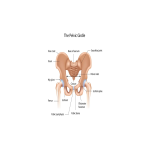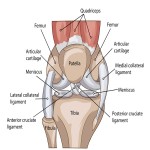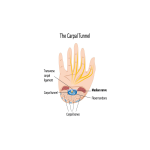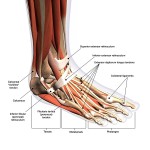There are many different bones, muscles and ligaments in the hand and wrist, enabling you to make precise and complex movements.
The wrist consists of eight small bones, called the carpal bones, plus two long bones in the forearm – the radius and ulna. The carpal bones are arranged into two groups of four:
- At the upper end of the wrist are the pisiform, triquetrum, lunate and scaphoid.
- On the lower side of the hand are the hamate, capitate, trapezoid and trapezium.
Within the hand are the:
- Metacarpals – the five bones in the middle part of the hand.
- Phalanges – the 14 bones that make up the fingers of each hand. Each finger has three phalanges (distal, middle and proximal) while the thumb has two.
Where two bones meet are the joints. Each finger has three joints:
- At the bases is the metacarpophalangeal joint.
- In the middle is the proximal interphalangeal joint.
- At the end of the fingers is the distal interphalangeal joint.
Cartilage covers the end of the bones in the joint, lubricated by synovial fluid. This allows them to glide smoothly over one another as the joints move.
Ligaments connect the bones, helping to support them and provide stability. The ligaments in the hand include:
- Collateral ligaments on either side of the finger and thumb joints.
- Volar plate ligaments.
- Radial and ulnar collateral ligaments.
- Volar radiocarpal ligaments.
- Dorsal radiocarpal ligaments.
- Ulnocarpal and radioulnar ligaments.
Tendons connect muscles to bone. Among the tendons in the hand are the superficialis, profundus, extensor, flexor, extensor pollicis brevis and abductor pollicis longus.





